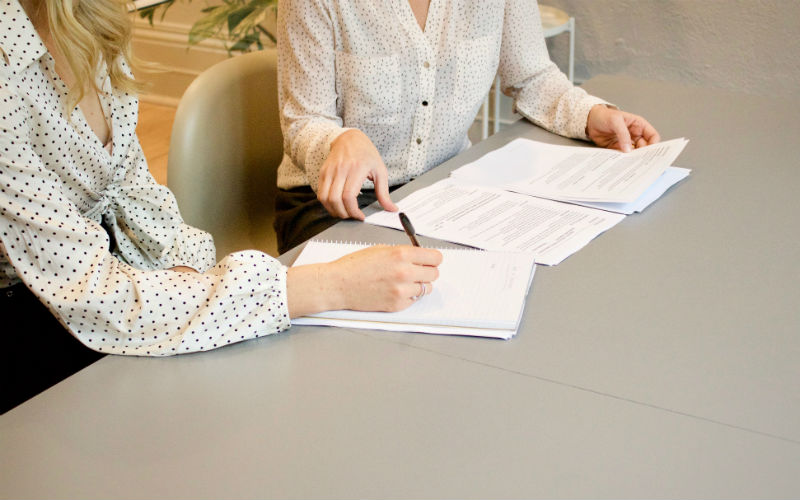There’s no greater feeling than seeing your years of hard work in savings pay off in the form of a property. While it’s important to celebrate the wins of cracking into the property market, keep in mind you still have to make sure you dot your I's and cross your T's to prevent any hiccups come settlement day.
What is a property settlement?
Property settlement is the process of transferring ownership of a property from the seller to the buyer. The transfer of ownership is conducted by your legal and financial representatives with the funds required to complete the purchase of the property transferred to the seller.
The seller will set the settlement date in the contract of sale. As a general rule, property settlement periods are usually 30 to 90 days, but can be longer or shorter depending on the circumstances of both parties.
Settlement is quite a complex process, so it’s common for most home buyers to utilise the services of a conveyancer or solicitor to assist. These professionals will generally carry out due diligence checks related to the purchase, liaise with the seller’s representatives and ensure the necessary paperwork is completed for legal requirements to be met.
What happens on settlement day?
Pre-settlement
There are a few legal and admin tasks that have to be completed before the property you intend to purchase can become yours. The good news is that your conveyancer or solicitor can manage all of these tasks for you, without the need for you to be present.
A precise time for final settlement will be set. This is the time when final payment will be made and you will take legal possession of the property.
Shortly before final settlement, your conveyancer or solicitor will provide you with a settlement adjustment statement. This will include pre-settlement adjustments such as stamp duty, any stamp duty concessions, and the First Home Owner Grant - if applicable. There may also be adjustments to compensate the seller for council rates, water, and body corporate fees.
The seller must pay all the property’s bills right up until the buyer takes possession on settlement day. But sometimes certain bills are paid in advance, which means the seller may be paying for services that extend beyond settlement day. When this happens, the seller is compensated through an ‘adjustment’ to the purchase price on settlement day.
You should check the pre-settlement adjustment statement carefully before advising your conveyancer to proceed with final settlement.
Settlement Day
Once you receive the green light, your conveyancer or solicitor will meet with the vendor’s conveyancer or solicitor to finalise settlement.
Your conveyancer or solicitor will:
-
register a mortgage against the title of your new property.
-
provide the funds to purchase the new property.
Your conveyancer or solicitor checks that:
-
any existing mortgage on the title to the vendor is discharged.
-
any third party or person who has rights over the property (a caveat) is removed.
-
all clauses on the sales contract are fulfilled.
-
the transfer of land and mortgage is registered with the title office in your state or territory.
Refinancing settlement day
When it comes to refinancing, settlement day is the day your new home loan is used to pay off your existing home loan. Typically, your new lender will do all the leg work for you. This includes:
-
Liaising with your previous lender to pay out and discharge your previous home loan as well as registering a new mortgage for your property.
-
Making sure your accounts are set up correctly and all funds go where they need to.
-
Informing you of when your first loan repayment is due and what the repayment amount and frequency will be.
As there has been no exchange of property, there’s not a great deal for you to do other than enjoy the benefits of your new home loan and ensure you’re making your repayments.
What happens after settlement day?
After settlement, your lender will draw down on your loan. This means that they’ll debit the amount they’ve paid at settlement from your loan account.
You’re then responsible for paying land transfer duty or stamp duty. It’s usually paid on the settlement date. The title to the property won’t be transferred to your name until you have paid this duty.
You should also receive confirmation from your lender, including details on your loan amount and repayments.
Receiving the keys
Once the funds have been transferred and the paperwork sent off to the titles office to register you as the new owner of the property, you are ready to collect the keys, unload couches and begin settling into your new home.
Settlement checklist
To help put your mind at ease and overcome the final obstacle, below you will find a checklist to help you best prepare for settlement day.
-
Confirm the important details - date, time, and venue for settlement on the property.
-
Prepare the funds required for settlement - if you have arranged a loan, your conveyancer or solicitor will usually ask your lender to deliver the cheques available from the proceeds of the loan to settlement.
-
Check the registration fee - If applicable, the vendor will allow you a credit for any registration fee that must be paid to the titles office for the removal of the vendor’s mortgage from the title.
-
Approve the settlement statement - prior to settlement day, you should receive a settlement statement from your conveyancer or solicitor outlining the funds required for settlement of the home, and will need your approval.
-
Conduct the final inspection - you should inspect the property one final time to ensure everything is in order to avoid any nasty surprises.
-
Check the adjustment for local council rates - the settlement statement will usually show the adjustment for local council rates, with these rates adjusted between the vendor and the buyer.
-
Adjust your water charges - water charges are adjusted between the vendor and buyers on the settlement date. You will only have to pay the rates and charges for the time after you complete your purchase, or after the time agreed upon with the vendor.
-
Adequately insure the property - this includes contents insurance, landlord’s insurance (if you’re going to lease the property), and home owners warranty insurance (if you’re going to carry out building work at the property).
-
Collect the keys - the keys may be collected from the real estate agent after settlement.
Image by Hiveboxx via Unsplash

Ready, Set, Buy!
Learn everything you need to know about buying property – from choosing the right property and home loan, to the purchasing process, tips to save money and more!
With bonus Q&A sheet and Crossword!



 Harry O'Sullivan
Harry O'Sullivan
 Bea Garcia
Bea Garcia
 Denise Raward
Denise Raward
 Brooke Cooper
Brooke Cooper


